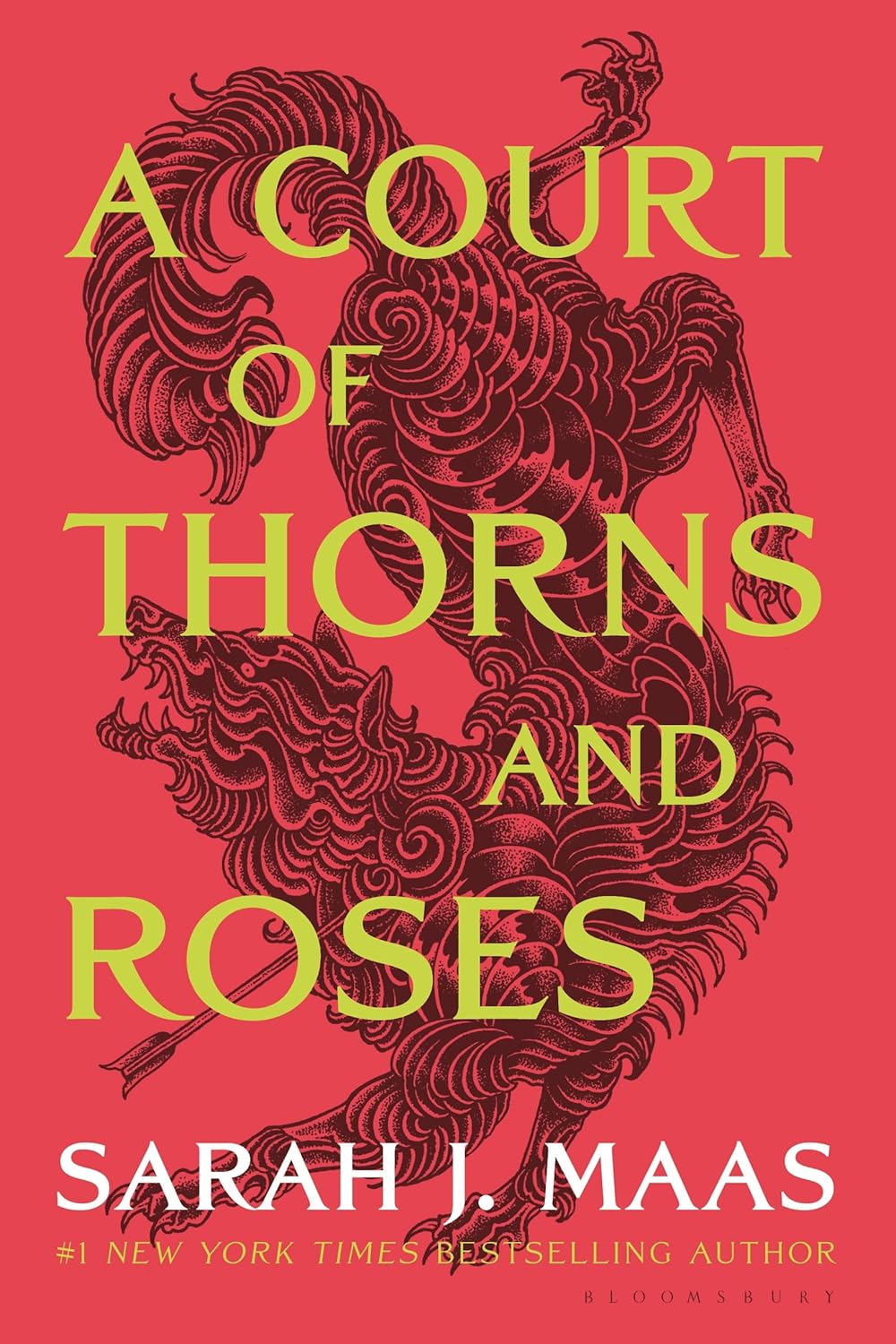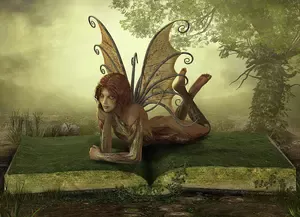- Home
- Fairy Blog
- Fairy Cakes
- Fairy Quotes
- Safety Dance
- The Flower Fairies Books
- What is a Fairy?
- Are Fairies Real?
- Elemental Fairies
- Faeries
- What are the Fae?
- Fae Fantasy Books
- Fairy History
- Origin of Fairies
- Fairies in Folklore
- Pixies
- Pixie Fairy Differences
- Gothic Fairies
- Tooth Fairy
- Fairy Festivals
- Fairy Gardens
- Fairy Garden Accessories
- Fairy Forests
- Fairy Poems
- Fairy Tales
- Fairy Tale Origins
- Classic Fairy Tales
- 24 Fairy Tales
- Fairy Tales around the World
- About Fantasy Creatures
- Dragons
- Dwarves
- Elves
- Gnomes
- Leprechauns
- Mermaids
- Unicorns
- Fairy Face Painting
- Free Fairy Art
- Fairy Coloring Pages
- Fairy Crafts For Kids
- Chinese Dragon Art
- How to Draw a Dragon
- Chinese Dragon Drawing
- Dragon Coloring Pages
- Fairy Tattoo Ideas
- About Us
- Contact Us
- Disclaimer
- Privacy Policy
The Fairy Queen
The Fairy Queen is defined as 'The Queen Of All Fairies'. This then, should be a major topic in any discussion about Fairies. There are references in some very famous literature, and a lot of fairy tales to a fairy queen. They are all based on folklore, history and legends from different cultures.
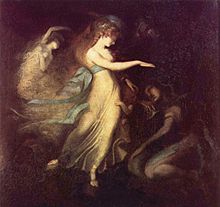 Arthurian Legend Fairy Queen
Arthurian Legend Fairy QueenThe Fairy Queen is a mythical figure who appears in various forms in folklore, literature, and popular culture. She is often depicted as the ruler of fairies and other magical creatures, presiding over their enchanted realm with grace and wisdom.
She embodies beauty, compassion, and the power of nature, and her character has evolved over time as different cultures and authors have adapted her story to suit their own needs and tastes.
Amazon Audible Promo
With Amazon Audible’s holiday promo ($0.99/month for 3 months) and the release of Harry Potter: The Full-Cast Audio Editions, there's never been a better time to join.
The Fairy Queen In Folklore
The Fairy Queens are popular figures in folklore and literature, often portrayed as powerful and enchanting beings that rule over the realm of fairies. They can be found in various cultures, but some of the most notable fairy queens from folklore and literature include:
- Titania - Perhaps the most famous fairy queen, Titania is a character from William Shakespeare's play "A Midsummer Night's Dream." As the queen of the fairies, she is married to Oberon, the king of the fairies, and their quarrels and mischief often affect the lives of the humans in the play.
- Mab - Queen Mab is a fairy queen from English folklore, often associated with dreams and the night. She is described as a tiny, mischievous creature who rides in a chariot pulled by insects. Mab is also mentioned in Shakespeare's play "Romeo and Juliet," as well as in various poems and literary works, including Percy Bysshe Shelley's "Queen Mab."
- Rhiannon - Rhiannon is a figure from Welsh mythology who is sometimes portrayed as a fairy queen. She appears in the medieval Welsh collection of tales called the Mabinogion and is known for her beauty, wisdom, and magical powers. Rhiannon is associated with horses and is often depicted riding a white horse.
- Áine - In Irish mythology, Áine is a goddess and fairy queen associated with summer, wealth, and sovereignty. She is often considered a deity of love, fertility, and the sun. Áine is known for her beauty and enchanting powers, and she is said to have the ability to shape-shift into various forms.
- Nicnevin - Hailing from Scottish folklore, Nicnevin is a fairy queen and the ruler of the Unseelie Court, which includes the more malevolent and dark fairies. She is associated with Samhain, the Gaelic festival that marks the end of the harvest season, and is sometimes considered a goddess of witches.
These are just a few examples of the many fairy queens found in folklore and literature from around the world. They often possess magical powers and are portrayed as both enchanting and sometimes dangerous figures, with the ability to influence the lives of humans and other creatures.
Medieval Names Given to The Fairy Queen
Sebile, Sedile, Sebille, Sibilla, and Sibyl are different names attributed to a medieval fairy queen, who appears in various legends and stories. While her portrayal can differ depending on the specific tale, some general descriptions and roles of this fairy queen can be summarized as follows:
- Sebile - Often depicted as a beautiful and enchanting figure, Sebile is a fairy queen who is sometimes portrayed as a noble and faithful lady. She may be associated with Sir Lancelot or King Arthur in different legends.
- Sedile - Another name for the medieval fairy queen, Sedile's character can vary from a faithful, virtuous woman to a seductive femme fatale. Her role in the stories might involve attempting to lure or trap noble knights like Sir Lancelot into the fairy realm.
- Sebille - Sebille, like the other names mentioned, is a fairy queen who is sometimes depicted as the wife or lover of Sir Lancelot or as the mother of King Arthur. Her portrayal can be that of a loyal, noble woman or a dangerous seductress.
- Sibilla - Sibilla is another name for the medieval fairy queen, and her character can range from a wise and powerful ruler to a cunning and alluring enchantress. She might be associated with Arthurian legends or other medieval tales, where she interacts with human characters.
- Sibyl - As a fairy queen, Sibyl can be portrayed as a beautiful, magical figure with both benevolent and malevolent qualities. She may be involved in the lives of King Arthur, Sir Lancelot, or other knights, either as a supportive or antagonistic force.
Though the names and specific details of this fairy queen's character may change from story to story, she generally embodies the complex and multifaceted nature of the fairy world, as well as the captivating and sometimes dangerous relationships between humans and supernatural beings in medieval literature.
More about Fairy Queen named Sebile
In some legends, Sebile is associated with Sir Lancelot, one of the most famous knights of King Arthur's Round Table. In these stories, she is sometimes portrayed as Lancelot's wife, lover, or even his captor, as she tries to seduce him and keep him in the fairy realm. This relationship highlights the intricate interplay between the human and fairy worlds in medieval literature and the potential for both love and danger in encounters with the supernatural.
In other tales, Sebile is connected with King Arthur himself. She is occasionally depicted as Arthur's mother, which further intertwines the realms of humans and fairies, as the legendary King of Britain is portrayed as having a direct connection to the fairy world through his lineage. This connection between King Arthur and the fairy queen serves to emphasize the magical and mythical nature of the Arthurian legends.
The character of Sebile, under her various names, highlights the rich tapestry of fairy lore in medieval literature and the captivating, sometimes ambivalent roles that fairy queens played in these stories.
The Fairy Queen In Literature
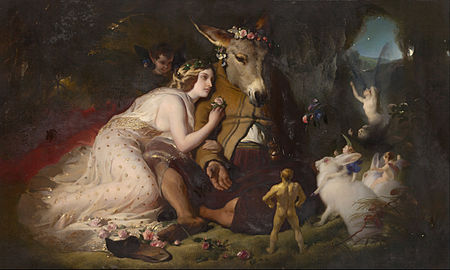
Gloriana, Queen of Faeries" derived from the name of the wife of Tarquinius Priscus. She is the daughter of Oberon, who in Shakespeare's later play is married to Titania, a name derived from Ovid as an epithet of the Roman goddess Diana.
Diana was regularly portrayed as the ruler of the fairy kingdom in demonological literature, such as King James VI of Scotland's Daemonologie, which says that she belongs to "the fourth kind of spirits, which by the Gentiles [non-Jews] was called Diana and her wandering court, and amongst us is called Fairy (as I told you) or our good neighbors".
Shakespeare's
"A Midsummer's Night Dream"
From “A Midsummer Night’s Dream,
” Act II Sc. 1.
Over hill, over dale,
Thorough bush, thorough brier,
Over park, over pale,
Thorough flood, thorough fire,
I do wander everywhere,
Swifter than the moon’s sphere;
And I serve the fairy queen,
To dew her orbs
Upon the green;
The cowslips tall
Her pensioners be;
In their gold coats,
Spots you see;
These be rubies,
Fairy favors
In those freckles live their savors.
I must go seek some dewdrops here,
And hang a pearl
in every cowslip’s ear.
Spencer's The Fairy Queen
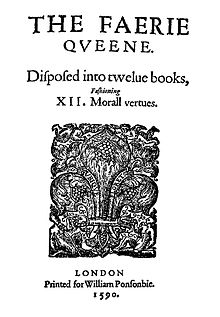
"Spenser's Fairie Queen," or more accurately, "The Faerie Queene," is an epic poem written by the English poet Edmund Spenser, first published in 1590. The poem is one of the most significant and influential works in English literature and is often regarded as a masterpiece of the Elizabethan era.
"The Faerie Queene" is an allegorical work that blends elements of romance, epic, and allegory to tell the story of several knights who represent various virtues, such as holiness, temperance, and chastity. Each knight embarks on a quest to serve the titular character, the Faerie Queene, who symbolizes Queen Elizabeth I.
In "The Faerie Queene," Edmund Spenser introduces a fairy queen by the name of Gloriana, who is also known as Tanaquill. This alternative name seems to be inspired by the wife of Tarquinius Priscus, and serves as an epithet for Gloriana, the Queen of Faeries.
Gloriana is portrayed as the daughter of Oberon, a character who is later married to Titania in Shakespeare's subsequent work. The name Titania originates from Ovid and is an epithet for the Roman goddess Diana. In various demonological texts, including King James VI of Scotland's "Demonology," Diana is often depicted as the ruler of the fairy realm.
The poem is written in a unique verse form known as the Spenserian stanza, with the rhyme scheme of ababbcbcc. Spenser intended to write twelve books, each focusing on one knight and his respective virtue. However, he completed only six books and a portion of a seventh.
The six completed books are:
- Book I: The Legend of the Redcrosse Knight, who represents Holiness.
- Book II: The Legend of Sir Guyon, who represents Temperance.
- Book III: The Legend of Britomart, a female knight who represents Chastity.
- Book IV: The Legend of Cambel and Telamond, who represent Friendship.
- Book V: The Legend of Artegall, who represents Justice.
- Book VI: The Legend of Sir Calidore, who represents Courtesy.
Each book narrates the adventures of its central knight and explores various moral and ethical themes. Through its intricate allegory and vivid imagery, "The Faerie Queene" reflects the complex political, religious, and cultural issues of its time, as well as Spenser's own views on these matters.
Purcell's Opera The Fairy Queen
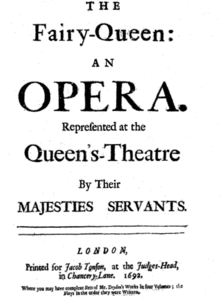
A masque, as used in the context of Purcell's The Fairy-Queen and other works from the same era, is a form of courtly entertainment popular in 16th and 17th-century England. Masques typically combined elements of drama, music, dance, and elaborate scenery or costumes, often with allegorical or mythological themes. They were usually performed by courtiers and professional actors, often in the presence of royalty or other high-ranking individuals.
In Purcell's The Fairy-Queen, the masques serve as musical interludes within the adaptation of Shakespeare's A Midsummer Night's Dream. These masques are not directly connected to the play's plot but instead are related metaphorically, providing additional layers of meaning and spectacle. They contribute to the overall "Restoration spectacular" nature of the work, which was a characteristic of entertainment during the English Restoration period.
The Fairy-Queen (1692; Purcell catalogue number Z.629) is a masque or semi-opera by the renowned composer Henry Purcell, often described as a "Restoration spectacular." The libretto, which is an anonymous adaptation, is based on William Shakespeare's famous wedding comedy, A Midsummer Night's Dream.
First staged in 1692, The Fairy-Queen was created just three years before Purcell's untimely death at 35. After his passing, the score vanished and was only rediscovered in the early 20th century.
Interestingly, Purcell did not set Shakespeare's original text to music. Instead, he crafted music for short masques in all but the first act. While the play was somewhat modernized to align with 17th-century theatrical norms, the spoken text remains primarily faithful to Shakespeare's original work.
The masques hold metaphorical, rather than literal, connections to the play, leading some critics to argue that they have no relationship to the play at all. However, recent scholarship suggests that the opera, which concludes with a masque featuring Hymen, the God of Marriage, was likely composed to celebrate the fifteenth wedding anniversary of William III and Mary II.
"The Fairy-Queen" (1692; Purcell catalogue number Z.629) is a semi-opera or masque composed by Henry Purcell, embodying the essence of a "Restoration spectacular."
The libretto, adapted anonymously, is based on William Shakespeare's matrimonial comedy "A Midsummer Night's Dream." Premiering in 1692.
"The Fairy-Queen" was composed just three years before Purcell's untimely death at 35. After his passing, the score disappeared, only to be rediscovered in the early twentieth century.
Instead of setting Shakespeare's text to music, Purcell crafted musical accompaniments for brief masques throughout the play, except for the first act. The original play was moderately modernized in line with the seventeenth-century theatrical conventions, but the spoken text largely remains true to Shakespeare's original.
The masques share a metaphorical connection with the play rather than a literal one, and many critics argue they have no relation to the play at all. However, recent studies have revealed that the semi-opera, culminating in a masque starring Hymen, the God of Marriage, was created to commemorate the fifteenth wedding anniversary of William III and Mary II.
The Fairy Queen Train

What does this have to do with Fairies? Well with a name like that, I thought maybe....BUT it does not appear to have anything to do with fairies. I have researched Google, India History and India Train History and none of them have any mention why in 1895 they named this "The Fairy Queen Train".
Saying all that, about the train. It is one of the oldest luxury trains in the world that still operates, since 1855. It is in the Guinness Book of World Records. It is decorated like it is ready for Royalty. It offers two day tours to the areas around Delhi, Alwar and the famous Sariska Tiger Reserve in Rajasthan, But, I can't find any reason for choosing this name.
If you know do please contact us!
Book of the Month
The Best Selling Fae Fantasy Book! A great Christmas gift!
CLICK HERE for more information and best price!
Recent Articles
-
Fae Fantasy Books - where love can be both thrilling and terrifying!
Nov 22, 25 02:34 AM
Fae Fantasy Books - explore new aspects of what it means to be human in a world where magic and immortal beings exist! A perfect blend of danger and allure! -
Water Fairies: Meet the Mystical Undines of the Waters
Nov 19, 25 02:45 AM
Water fairies, often called undines, are enchanting magical beings deeply connected to the element of water. These spirits appear in folklore and fairy tales -
Earth fairies are elemental beings connected to the earth element.
Nov 19, 25 02:34 AM
Earth fairies, also known as gnomes, are elemental beings deeply connected to the earth element. They have rich roots in folklore, mythology, and fairy tales

